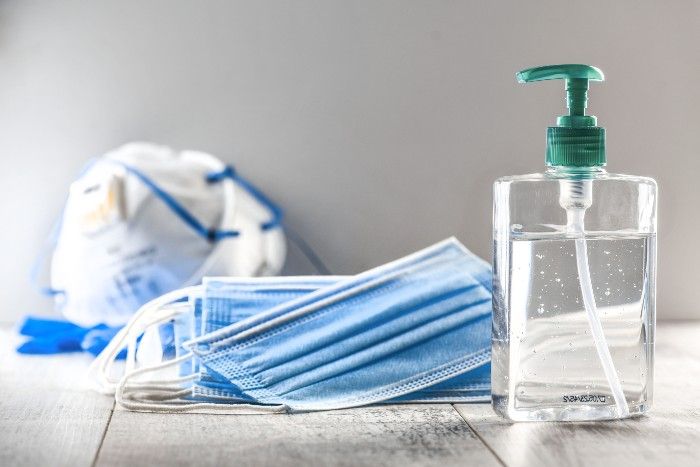Infection Prevention Best Practices in Senior Care Organizations
 Infection prevention is a critical component of providing senior care residents with quality care. According to the 2018 study, “Nursing Home Infection Control Program Characteristics, CMS Citations, and implementation of Antibiotic Stewardship Policies: A National Study,” it is estimated that, of the more than one million elderly persons living in nursing homes, between 765,000 to 2.8 million infections occur annually. Given the vulnerable population and the potential for infection transmission, it’s essential to develop quality infection prevention programs and processes.
Infection prevention is a critical component of providing senior care residents with quality care. According to the 2018 study, “Nursing Home Infection Control Program Characteristics, CMS Citations, and implementation of Antibiotic Stewardship Policies: A National Study,” it is estimated that, of the more than one million elderly persons living in nursing homes, between 765,000 to 2.8 million infections occur annually. Given the vulnerable population and the potential for infection transmission, it’s essential to develop quality infection prevention programs and processes.
Why Infections Occur in Senior Care Organizations
“Long-term care residents are at greater risk for infection due to their age and comorbidities,” says Melanie Ronda, MSN, RN, assistant director of health care quality improvement at IPRO. Ronda explains that many residents have comorbidities that affect their immune system, while the presence of open wounds or devices can also increase the chance of a resident getting an infection.
The communal environment of many senior care organizations also contributes to infection spread. When residents live close to each other, there is an increased risk of infection transmission.
Infection Prevention Best Practices for Senior Care Organizations
“The number one way for bacteria to spread in a long-term care facility is in the hands of health care workers,” says Ronda. She notes that it’s important for caregivers to clean their hands as appropriate. Staff may use an alcohol-based hand rub or soap or wash their hands with soap and water. “Health care workers should clean their hands often during their shifts,” says Ronda. That includes cleaning their hands before providing care to a resident, before and after putting gloves on, and when they arrive at work.
It’s also extremely important to use respiratory etiquette to prevent the spread of bacteria. “Teaching staff, residents, and families to properly manage coughing and sneezing is important,” she says. “Health care workers who feel ill shouldn’t report to work, and families who feel ill shouldn’t visit their loved ones. The CDC provides detailed information on respiratory etiquette, including coughing and sneezing into your sleeve.
While hand hygiene is imperative, Ronda notes that senior care organizations should also implement other important measures such as using proper personal protective equipment (PPE). “During COVID, we have been using source control masking,” she says. “Source control masking is effective in preventing the spread of droplets to others around you. We use other forms of PPE to prevent the spread of infections to residents and health care workers. Also, it is essential to pay attention to cleaning and disinfecting and ensure that the proper cleaning products are being used, following the directions, and at the intervals necessary to reduce bacteria and viruses in the environment.”
Ronda notes that the COVID-19 pandemic has highlighted a key oversight in infection prevention: Many senior care organizations lack the ability to ensure that people who were entering the building were currently well. The pandemic highlighted the importance of people being aware of changes in their bodies and to not visit or come to work when they are sick. “This mistake may cause an outbreak of an illness in the facility,” says Ronda.
There are many ways a senior care organization can improve on their infection policies. Ronda recommends an organization start by reviewing and auditing their current policies and practices. After completing the audit, the organization should evaluate opportunities to improve and put together a quality improvement project to enhance their system. “Included in that project would be a root cause analysis, education policy review and further auditing,” she says. She notes that quality improvement and quality assurance organizations are available to help senior care facilities with tools and resources to enhance their quality improvement process.
Most importantly, senior care organizations need to identify ways to keep up with constantly changing regulations and guidance. “It’s very important to stay aware of what is happening in your community,” Ronda says. “Get connected with your local CMS Quality Innovation Network-Quality Improvement Organization (QIN-QIO) for the latest information.”
source: https://www.iadvanceseniorcare.com/infection-prevention-best-practices-in-senior-care-organizations/









